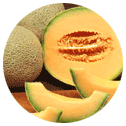 Full List of Fruits
Full List of Fruits  Mora de Castilla
Mora de CastillaMora de Castilla
![]() Introduction of Mora de Castilla Fruit
Introduction of Mora de Castilla Fruit
Scientific name - Rubus glaucus
Rubus glaucus classified as a deciduous shrub, together with the Andes, it is found in Latin and South America. Commonly known as Mora de Castilla or Andean Raspberry, the fruit is compared to a loganberry. Having its roots from the family of Rosaceae, this perennial semi-erect climbing shrub consists of trifoliate leaves that have serrated edges. They are dark green in color and has white beam beneath, the leaves and stems are roofed by a white powder. The flowers of this self-fertile plant are hermaphrodite. It consists of more than a few round and thorny stems that form the corona of the plant, 1 to 2 cm in diameter, and can grow up to 3 m.
The fruit of Rubus glaucus is a berry ellipsoid of 15 to 25 mm at its widest diameter of 3-5 g weight. The color of the fruit changes three times, when it is formed, they are green in color and become red when ripe and then changes dark and bright purple. With duo annual max out, the fruit production is said to be continuous. Only on reaching maturity, the plants produce fruit, may be after the first year and it extends through the rest of the plant's life which can be 12-20 years. When ripe, the small drupes become fastened to the receptacle. With a bittersweet taste the fruit is made into juices, nectars, jams, jellies, pastries, confectionaries, ice creams. They are rich in:
 Calcium
Calcium
 Vitamin C and
Vitamin C and
 Phosphorus
Phosphorus
It prefers loamy soil that is well-drained and grows easily in sun or semi-shade. They are cultivated predominantly for the edible fruit it produces in S. America. Approximately up to 20 tonnes per hectare are achieved. Talking about the forbearance, it has low and sensitive tolerance levels; they are not resilient in the colder areas and can withstand temperatures down to between -5 and -10°c. Interrelated closely to R. occidentalis, they are particularly vulnerable to honey fungus; in addition they are prone to some N. American raspberry syndromes, this species could be of use in hybridization programmes with American and European blackberries and raspberries.
Plant propagation is done through seeds, however, it requires some stratification, coming to stored seeds, and they need a stratification of one month at about 3°c. They are best sown in early autumn in a cold frame. When the plant is large enough to handle, the seedlings are perforated and grown in a cold frame. During the late spring of the following years, they are planted out into their permanent positions and the month of July, tip layering is done and planted out in autumn. Early spring is best for divisioning or just before leaf-fall in the autumn.
The harvesting of Mora de Castilla is usually done by hand. It is done in late summer or early fall, when the berries are ripe and ready to be picked. The harvest usually starts in mid-July and ends in late September or early October.
When harvesting Mora de Castilla, it is important to be gentle and to pick the berries without damaging the shrub. The berries should be picked when they are ripe and dark in color, but still firm. The fruits are then collected into baskets or bags, and stored in cool and dry conditions until they are ready for use.
The harvesting of Mora de Castilla is a labor-intensive process, as the berries need to be carefully picked and handled in order to maintain their quality. It is also important to make sure that the harvesting process is done properly, as the berries can easily be damaged if they are picked too early or too late.
Once the berries have been harvested, they can be used to make jams, jellies, pastries, and beverages. It is also possible to freeze the berries so that they can be enjoyed throughout the year. The fruits can also be dried and used as a topping for desserts or in salads.
The harvesting of Mora de Castilla is an important part of the culture of the Iberian Peninsula. It is a labor-intensive process, but the delicious berries that it produces make it worth the effort. The harvesting of Mora de Castilla is a tradition that has been around for centuries, and it is one that will continue for many years to come.


















